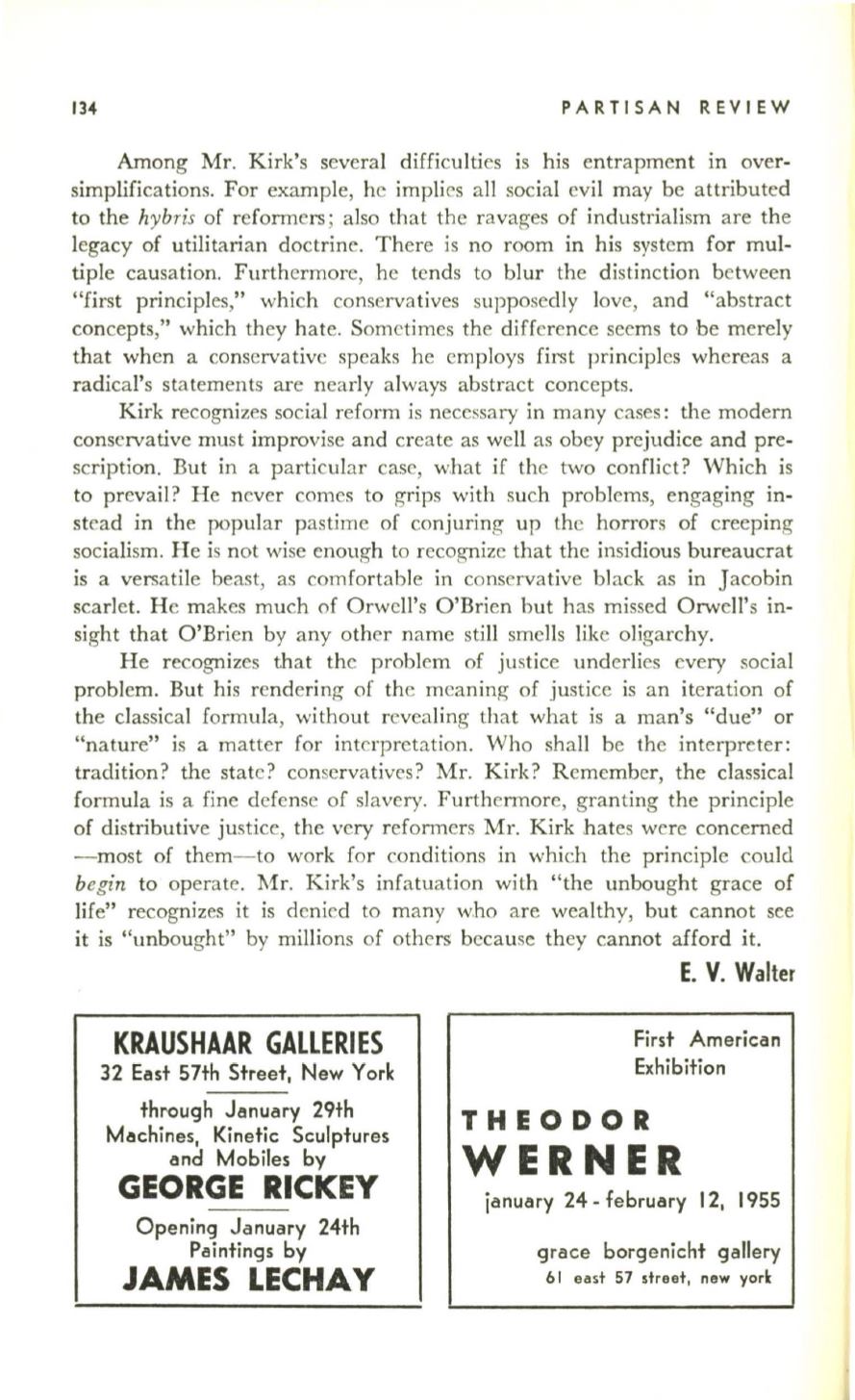
134
PARTISAN REVIEW
Among Mr. Kirk's several difficulties is his entrapment in over–
simplifications. For example, he implies all social evil may be attributed
to the
hybris
of reformers ; also that the ravages of industrialism are the
legacy of utilitarian doctrine. There is no room in his system for mul–
tiple causation. Furthermore, he tends to blur the distinction between
"first principles," which conservatives supposedly love, and "abstract
concepts," which they hate. Sometimes the difference seems to be merely
that when a conservative speaks he employs first principles whereas a
radical's statements are nearly always abstract concepts.
Kirk recognizes social reform is necessary in many cases: the modern
conservative must improvise and create as well as obey prejudice and pre–
scription. But in a particular case, w.hat if the two conflict? Which is
to prevail? He never comes to grips with such problems, engaging in–
stead in the popular pastime of conjuring up the horrors of creeping
socialism. He is not wise enough to recognize that the insidious bureaucrat
is a versatile beast, as comfortable in conservative black as in Jacobin
scarlet. He makes much of Orwell's O'Brien but has missed Orwell's in–
sight that O'Brien by any other name still smells like oligarchy.
He recognizes that the problem of justice underlies every social
problem. But his rendering of the meaning of justice is an iteration of
the classical formula, without revealing that what is a man's "due" or
"nature" is a matter for interpretation. Who shall be the interpreter:
tradition? the state? conservatives? Mr. Kirk? Remember, the classical
formula is a fine defense of slavery. Furthermore, granting the principle
of distributive justice, the very refonners Mr. Kirk hates were concerned
-most of them- to work for conditions in which the principle could
begin
to operate. Mr. Kirk's infatuation with "the unbought grace of
life" recognizes it is denied to many who are wealthy, but cannot see
it is "unbought" by millions of others because they cannot afford it.
KRAUSHAAR GALLERIES
32 East 57th Street, New York
through January 29th
Machines, Kinetic Sculptures
and Mobiles by
GEORGE RICKEY
Opening January 24th
Paintings by
JAMES LECHAY
E. V. Walter
First American
Exhibition
THEODOR
WERNER
january 24 - february 12, 1955
grace borgenicht gallery
61
east
57
street,
new
york


